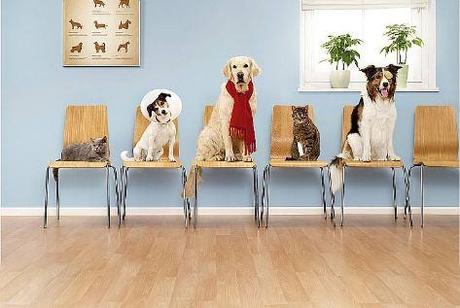
Contact your vet for advice if you have any concerns about your dog, however trivial you think they might sound. If your worries prove to be unfounded then your mind will have to been put to rest.
(Check out Dog First-Aid)
Recognizing a Problem
Any change in your dog may be a warning of ill health. The most trivial signs, such as droopy eyelid, should not be dismissed as it could be significant. Your dog may have an internal problem such as a stomach upset, an external problem affecting the coat and skin, or a combination of the two. You may notice only vague signs, such as sleeping more or exercising less readily, or something obviously wrong, such as the dog limping, or shaking his head because of grass awn is trapped in his ear.
Many common disorders are minor and easily treated, especially if they are recognized early. Always speak to your vet before attempting any home treatment. What might seem appropriate course of action for humans could be harmful to a dog. It may be sufficient to act on advice given by your veterinarian over the telephone, although often the vet will need to examine your dog to be certain of how to proceed.
After taking a dog’s history and examining him fully, the vet may still need to perform further investigations such as blood tests and imaging. Sometimes, a dog may be diagnosed with a serious disorder that needs hospitalization and even surgery, followed by a long convalescence – but fortunately, common things really are common. An itchy dog is more likely to have fleas than an obscure problem with his nervous system.
Signs of a Problem Include:
- Lethargy, tiring unexpectedly on a walk
- Altered breathing pattern or an abnormal sound during respiration
- Coughing or sneezing
- Open wound
- Swelling or unusual bump
- Blood; from a wound, passed in urine (which will appear pink or contain blood clots); in feces or vomit
- Limping or stiffness
- Unintentional weight loss
- Weight gain, particularly if the dog has developed a distended abdomen
- Reduced appetite or refusing food altogether
- Voracious appetite, or a change in what the dog will eat
- Vomiting, or regurgitation of food shortly after eating
- Diarrhea or difficulty of passing a motion
- Crying with pain when passing feces or urine
- Itchiness; rubbing at mouth, eyes, or ears; dragging rear along the ground (scotting) or washing excessively at that area; or all-over bodily itching
- Abnormal discharge; from any orifice (such as the mouth, nose, ear, vulva, prepuce, or anus) form which there is not usually a discharge, or because the normal smell, color or consistency has altered
- Coat changes; dull with a greasy texture, or excessively dry; debris in the coat such as flea dirt, actual fleas, scabs, or scales
- Excessive hair-loss resulting in areas of baldness
- Change in coat color (may occur gradually that it’s noticed only when compared with an old photography)
- Abnormal thirst; a dog depending more time than usual at his water bowl or a source of water outside, like a pound or bucket

Pets waiting in line. *
Life-Long Health
Bear in mind that you and your dog’s vet are aiming for your dog to lead as long and healthy a life as possible. IF you need more advice or information, your vet will be ready to help.
Key-Notes in Checking Signs of Ill Health
- Recognize the warning signs. It is helpful to understand what is normal in your dog. You will then be able to recognize anything unusual, like lack of interest in food or exercise, that may be due to ill health.
- Any change in your dog may be a warning of ill health. The most trivial sign shouldn’t be dismissed as it could be significant.
- Many common disorders, for example ear mites, are simple for a vet to diagnose, and can be easily remedied. IF there is no simple explanation of a problem, your vet will work through causes in order of likelihood.
* image source

